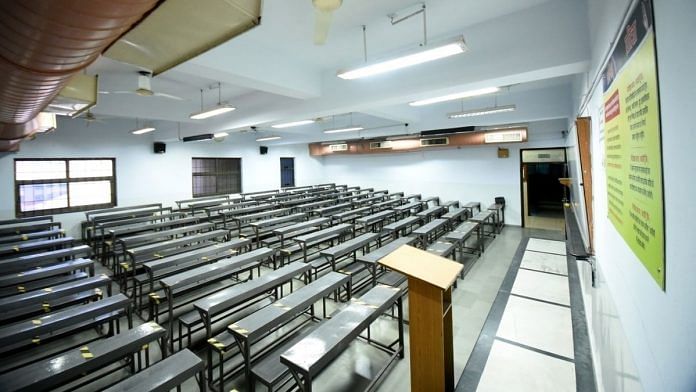The Raja called his nephews and asked them, ‘My dear nephews, what is this that we hear?’ The nephews said: ‘Sire, the bird’s education has been completed.’
‘Does it hop?’ the Raja enquired. ‘Never!’ said the nephews. ‘Does it fly?’ ‘No.’
– The Parrot’s Training, Rabindranath Tagore
The National Education Policy 2020 was a major policy shift – it aimed to restructure and reorient the system. It was heavily discussed and debated among academicians, educationists, university professors, teachers and its beneficiaries – the students.
Now, it has been a year since the Union Cabinet approved the NEP on 29 July 2020. But there are many hard questions staring right at our faces – for politicians, policy formulators and implementers, parents and teachers. Should the Indian middle class’ love affair with engineering and medicine be given up? Will Generation Z and its successors be able to make choices as per their aptitude than societal pressures? Is intelligence holistic or linear? Or, will ‘Sharma Ji ka Beta’ continue to spoil the game?
This melts down to one point – How much reform is enough reform?
A recent Netflix series titled Kota Factory depicts the lives of the students in the hub of the coaching centre where young people go to prepare for various entrance exams. Though filled with satire, it addresses the amount of mental stress and hardships an individual goes through for limited seats in colleges, where the inability to deal with failure either leads to doubt-laden adults or in the worst-case scenario, suicides. The culture of coaching that has mushroomed in the various pockets of India is a product of commercialisation of education that ends up making holes in the pockets of its customers.
Quite ironically, the Chinese government known for its authoritarian governance, has heavily cracked down on private EdTech companies. The Chinese Communist Party guidelines make it compulsory for private tutoring companies to register themselves as non-profit organisations. It also aims at regulating tutoring agencies.
Now, many of you might be thinking that this article is urging the government in India to follow suit. But that is not the case.
Also read: Who said NEET hasn’t served its purpose? Just look at how the power elites fared
A closer examination of recent initiatives like the policy guidelines for academic session 2021-22 for Class X and Class XII is a welcome step. The board examination for students will be conducted twice a year based on core competencies and not mere reproduction of facts. To excel in the exam, one needs the cognitive ability to question, reason and analyse. Further, break-up of the syllabus into halves emphasises a shift from the earlier practice of rote learning the entire book for a yearly assessment.
In policy formulation, it is said that for any government scheme/policy to succeed it needs ‘Research’ and ‘Resources’.
Sadly, even today a major chunk of society equates intelligence with the marks of a student. However, it is to be noted that studies by psychologists like Harward Gardener have shown that an individual possesses intelligence in multiple fields like music, bodily kinaesthetic, spatial-visual and linguistic. So, a million-dollar question is: Are we aware about it in tech-driven societies?
Unfortunately, India has also lagged behind in the latter parameter. This was not the first attempt to restructure the education sector. Earlier policies of 1968 and 1986 had similar ambitions. But a major reason for their limited utility was the fund crunch. As per the Economic Survey of 2020, the education sector in 2014-19 received 2.8 per cent of GDP; 3-3.5 per cent in 2019. But as per experts, it must receive 6 per cent of GDP on a yearly basis.
So, one year later, where are we heading?
Nikita Verma is a student at Kirori mal College, Delhi University. Views are personal.



